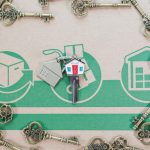Discerning of Mortgage Loan Fraud Audits: A Comprehensive Guide
Introduction
Mortgage loan fraud is one of the most significant challenges in the real estate and lending industry. As the housing market grows and mortgage loans continue to play a pivotal role in the economy, fraudulent activities in this domain can have devastating effects on lenders, borrowers, and financial institutions. Mortgage fraud not only increases the risk for lenders but also poses challenges for regulators, impacting the entire financial ecosystem. With the rise of advanced technologies and changing market dynamics, mortgage loan fraud has become more sophisticated, making it imperative for lenders and financial institutions to implement effective fraud detection and prevention measures.
Mortgage loan fraud audits play a critical role in identifying fraudulent activities that may otherwise go unnoticed. These audits involve a detailed analysis of mortgage documents, loan application data, and the entire loan process to identify discrepancies, misrepresentations, or intentional omissions. Through a comprehensive audit, financial institutions can pinpoint red flags and take preventive or corrective actions to minimize the potential for fraud. In this blog, we will explore the significance of mortgage loan fraud audits, the key signs of fraud, the types of mortgage fraud schemes, and how audits can help in detecting and preventing fraudulent activities.
Mortgage fraud can range from misrepresentation of income and assets to outright falsification of documents. The consequences of mortgage fraud are severe, affecting the financial stability of both borrowers and lenders. Fraudulent loans can lead to defaults, increased risk for lenders, and legal ramifications. Mortgage loan fraud audits serve as an essential tool for mitigating these risks, ensuring that only legitimate loans are approved, and that financial institutions comply with regulations.
The Importance of Mortgage Loan Fraud Audits
Mortgage loan fraud audits are essential for several reasons. First and foremost, they help financial institutions detect fraud early in the loan process. Detecting fraud before a loan is disbursed reduces the financial impact on both the borrower and the lender. Fraudulent loans that go unnoticed can result in significant financial losses, defaults, and even legal consequences. Second, mortgage loan fraud audits help ensure compliance with regulations. The mortgage industry is highly regulated, with strict laws governing the lending process. Failure to comply with these regulations can result in penalties, legal actions, and reputational damage for lenders.
Moreover, mortgage loan fraud audits contribute to maintaining the integrity of the lending process. By identifying potential fraudulent activities, these audits protect the overall health of the mortgage market. Financial institutions and lenders rely on these audits to maintain a secure and efficient lending environment, ensuring that the right loans are approved and that fraudsters are held accountable. Lastly, mortgage loan fraud audits provide valuable insights into emerging fraud trends, helping lenders stay ahead of evolving fraud tactics.
Types of Mortgage Loan Fraud
Mortgage loan fraud is a broad category that encompasses various fraudulent activities, each with distinct characteristics. Some common types of mortgage fraud include:
- Income Fraud:This type of fraud occurs when a borrower misrepresents their income to qualify for a loan they would not otherwise be eligible for. Borrowers may inflate their income or provide false documentation, such as fake pay stubs or bank statements.
- Asset Fraud:Asset fraud involves misrepresenting or inflating the value of assets to secure a larger loan. Borrowers may provide false bank statements or fake asset documentation, such as fabricated investment portfolios, to meet the lender’s requirements.
- Appraisal Fraud:In appraisal fraud, the property value is inflated to secure a higher loan amount. This may involve collusion between the borrower, appraiser, and other parties to artificially increase the appraised value of a property.
- Occupancy Fraud:Occupancy fraud occurs when a borrower misrepresents their intended occupancy of the property. For example, a borrower may claim that they will occupy the property as their primary residence when in fact, they intend to rent or sell it.
- Straw Buyer Fraud:A straw buyer is a person who is used as a front to acquire a mortgage loan on behalf of someone else. The straw buyer typically has a good credit score and financial standing but has no intention of owning the property. This scheme is often used to help individuals with poor credit obtain a loan.
- Foreclosure Rescue Fraud:This type of fraud targets homeowners facing foreclosure. Fraudsters offer to help homeowners avoid foreclosure by securing a loan modification or short sale but charge upfront fees or engage in other fraudulent activities that do not benefit the homeowner.
Each of these fraud types can have severe consequences for lenders, investors, and borrowers alike. Mortgage loan fraud audits are designed to identify these and other fraudulent activities early on, preventing further financial losses.
Signs of Mortgage Loan Fraud
Mortgage loan fraud can be difficult to detect, especially when the borrower is adept at covering up their fraudulent activities. However, there are several common signs that may indicate potential fraud:
- Inconsistent Information:One of the most common signs of mortgage fraud is inconsistencies in the borrower’s information. For example, discrepancies between the loan application and supporting documents, such as income, employment, or asset information, can be a red flag.
- Unverifiable Documentation:Fraudulent borrowers often provide unverifiable or questionable documentation to support their loan application. This may include fake pay stubs, forged tax returns, or falsified bank statements. During a mortgage loan fraud audit, auditors will attempt to verify all documentation to ensure its authenticity.
- Inflated Property Appraisals:If a property appraisal comes in significantly higher than expected, it could be a sign of appraisal fraud. Mortgage auditors look for discrepancies between the appraised value and comparable properties in the area to determine whether the appraisal is legitimate.
- Unusual Occupancy Claims:Borrowers who claim they will occupy the property as their primary residence but later sell or rent it out could be committing occupancy fraud. Mortgage loan auditors will examine occupancy declarations and verify the borrower’s claims to ensure they align with the facts.
- Multiple Loan Applications:Borrowers who submit multiple loan applications to different lenders, especially for the same property, may be attempting to defraud the system. Mortgage loan fraud auditors track applications across multiple lenders to detect this type of fraud.
- Unexplained Large Deposits:Borrowers who make large, unexplained deposits into their accounts shortly before applying for a mortgage loan may be trying to hide the source of their funds. Auditors will scrutinize bank statements for any unusual or unexplained activity.
By identifying these signs early on, mortgage loan fraud auditors can take action to prevent fraud before it becomes a larger issue.
How Mortgage Loan Fraud Audits Work
Mortgage loan fraud audits involve a comprehensive review of the borrower’s application, financial documents, and the property in question. The goal of the audit is to identify any signs of fraudulent activity and ensure that the loan process is conducted according to industry standards and regulatory requirements.
- Document Verification:The first step in the audit process is verifying the borrower’s documentation. This includes income verification, asset verification, and employment history. Auditors cross-reference the information provided with external sources, such as tax records, bank statements, and employment records.
- Property Valuation Check:The next step is reviewing the property’s appraisal. Auditors compare the appraised value with comparable properties in the area to ensure that the valuation is accurate. They may also check for any signs of inflated appraisals or collusion between the borrower and appraiser.
- Occupancy Verification:Auditors verify the borrower’s occupancy status by reviewing documents such as utility bills, lease agreements, and inspection reports. If the borrower claims the property will be their primary residence, auditors will ensure that the property aligns with this claim.
- Credit Check and Loan History Review:Auditors review the borrower’s credit history and any past loans to identify potential issues or inconsistencies. They also examine the borrower’s history of mortgage payments to detect patterns that may indicate fraudulent behavior.
- Fraud Detection Tools:Many mortgage loan fraud audits use advanced fraud detection tools and software to identify potential fraudulent activity. These tools can analyze large amounts of data quickly, flagging any suspicious activity for further review.
- Audit Reporting:Once the audit is complete, auditors provide a detailed report outlining their findings. The report includes a summary of any discrepancies or signs of fraud, as well as recommendations for corrective action.
The Role of Technology in Mortgage Loan Fraud Audits
In recent years, technology has played an increasingly important role in mortgage loan fraud audits. Modern fraud detection tools use artificial intelligence (AI) and machine learning (ML) algorithms to analyze vast amounts of data and identify potential fraud patterns. These tools can flag suspicious transactions, highlight inconsistencies in documentation, and provide real-time insights into the loan process.
By using these advanced technologies, auditors can more effectively detect fraud early on, reducing the risk to lenders and borrowers. Additionally, technology enables auditors to perform more thorough and accurate reviews of mortgage applications, increasing the overall efficiency of the auditing process.
The Consequences of Mortgage Loan Fraud
The consequences of mortgage loan fraud can be severe, both for the borrower and the lender. For borrowers, committing fraud can result in the loss of their property, legal penalties, and a permanent tarnishing of their credit reputation. For lenders, fraudulent loans can lead to significant financial losses, regulatory penalties, and reputational damage.
Mortgage loan fraud can also contribute to broader economic instability. When large numbers of fraudulent loans are issued, they can lead to defaults, foreclosures, and a decline in property values, which can ultimately harm the housing market as a whole.
Conclusion
Mortgage loan fraud is a serious issue that poses significant risks to lenders, borrowers, and the entire financial system. However, by conducting thorough mortgage loan fraud audits, lenders can detect fraud early, reduce their exposure to risk, and maintain the integrity of the lending process. Mortgage loan fraud audits are a critical tool for protecting financial institutions, ensuring compliance with regulations, and safeguarding the broader housing market.
In an ever-evolving landscape, it is crucial for lenders to stay vigilant and proactive in their efforts to prevent mortgage fraud. With the help of advanced technology and expert auditors, mortgage fraud can be identified and mitigated before it becomes a larger issue. Mortgage loan fraud audits provide peace of mind, allowing lenders and borrowers to engage in the mortgage process with confidence.
Call to Action
Contact us today at (877)-399-2995 or visit Mortgage Audits Online to learn more. Secure your financial future with confidence!




